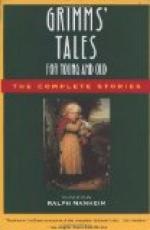Whatever opinions may be formed of the truth of this individual’s story of his birth, it is certain that a great many persons in France, whose opinions are entitled to respect, believed him to have been Louis XVII. Amongst the notices in the French papers to which his decease gave rise, was a note written by M. Herbert, once director of the military posts in Italy. It appears that when in that office, the man Neuendorf was, in 1810, arrested at Rome, and interrogated by M. Radet, chief of police in that city: the latter, pronounced him to be in reality the son of Louis XVI. Than M. Radet, there could not be a better judge of the matter, for he happened to be one of the five persons who arrested Louis and his family when they tried to quit France, and were intercepted at Varennes. Our own impression is, notwithstanding this and all other circumstances to the contrary, that the man was an impostor, and such we believe will also be the impression generally among our readers.
DUTCH ANNA.
It was shortly after the outbreak of the French Revolution that the humble heroine of this story made her appearance in my native village. Dutch Anna (for so she was called by the country people) was, as the name implies, a native of Holland; and at that time she might be about twenty-five years of age. She was of the middle size, stoutly and firmly built, with a round, good-humoured face, dark hair, clear, honest-looking hazel eyes, and a mouth which, though wide, was expressive of decision and firmness. Her dress, which never varied in style, consisted of a coloured petticoat of a thick woollen material, a short bed-gown of striped cotton, confined round the waist by the strings of a snow-white apron, a close-fitting, modest cap, underneath the plaited border of which appeared her glossy hair, neatly braided over her low, broad forehead; add to this a pair of well-knit stockings, which the shortness




